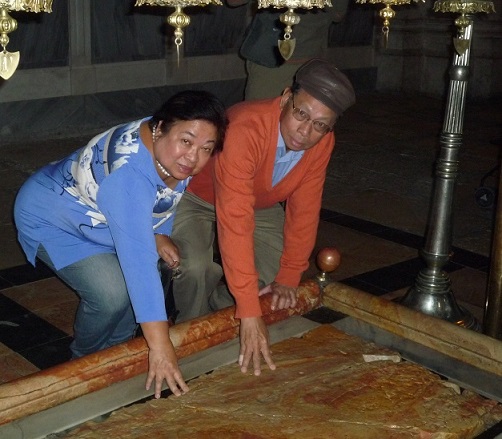Alhambra’s Islamic palaces: Spain’s architectural wonder
By Wendell GaaI love touring Spain very much, and I know a lot of people feel the same way. Great Mediterranean weather, fine beach resorts, and divine regional cuisine are all valid reasons to visit this country which has left a strong enduring cultural and religious legacy in the Philippines after a colonial reign lasting more than 300 years.
When I travel, history is usually the first and foremost priority for me. In the southern Andalusia region of Spain, history was surely abundant, most tellingly at the Alhambra, a palace-fortress compound in the city of Granada which dates all the way back to 889 AD, when it was originally a Roman military fortress. By the mid-13th century, it would become the seat of power for the Muslim rulers, the Moors.
Just last September, my mother, Erlinda C. Gaa, and I grabbed the chance to visit southern Spain for the first time. We were invited to join the annual get-together of the Sigma Deltan sorority alumni members from the University of the Philippines in Diliman. These annual Sigma Deltan reunions of the past few years have always selected a destination in Europe, and the organizers for this year opted to host the reunion in Malaga, Spain, an Andalusian resort city.
Weather-wise, arriving in Malaga straight from Moscow, Russia was like entering another world entirely, as the Russian skies were constantly overcast and grey during our visit there, in contrast to the blue skies and warm sunny climate that literally welcomed us as soon as our plane landed at the Malaga airport.
Our tour of Alhambra began on our third day. It was a two-hour road journey from Malaga to Granada. Our guide was Anthony, a white native of Zimbabwe, Africa, who had been living in Spain for several years, and was very well-acquainted with the history and culture of the Andalusian region. Looking around the highways, the geographic makeup of the landscapes was very similar to those in Southern California, with brown rolling hills laced with palm trees overlooking semi-arid ground. Interestingly enough, it felt at times as if we were actually driving from Los Angeles to San Diego.
At Alhambra, we met our local Spanish guide, who knew how to blend history and humor, and we were taken on a most fascinating trek back through time on the origins of this fabulously-designed Moorish palace.
From the remains of a small ancient Roman fortress, the Alhambra was reconstructed in the 1200s by the Moorish Emir Mohammed ben Al-Ahmar of the Emirate of Granada, who oversaw the designs and structuring of much of what can be seen at the palace today. And what a fine piece of architecture and engineering the Alhambra truly is. It is one of the finest examples of Islamic architecture in Europe. Much of the palace buildings are quadrangular in shape, with almost all the rooms leading to a central court adorned with fine columns and a beautiful garden replete with roses and fountains. Several of the rooms had ceilings and walls inscribed with elaborate Islamic calligraphy. We were led to the different rooms which were used for different purposes, such as praying, dining, socializing, and we were even led to one particular chamber which we learned was a room where the Emir would be entertained by female belly dancers!
The Alhambra has certainly been a witness to some of the most pivotal events in European history. Our guide further revealed how the Sultan of Granada Yusuf I converted the Alhambra into a royal palace in 1333. Within a century, after a series of wars with Christian armies expelled the Moors from southern Spain, the Alhambra was turned into the Royal Court of the renowned Spanish monarchs King Ferdinand and Queen Isabella. I was surprised to learn it was here in 1492 where Christopher Columbus received the royal endorsement of Ferdinand and Isabella to embark on his famous voyage which ultimately led him to become the first notable European explorer to discover the New World.
The palace no doubt has had its tribulations throughout the past centuries. After being abandoned and falling into disrepair well into the early 19th century and long after the reign of Ferdinand and Isabella ended, the armed forces of the French conqueror Napoleon attempted to demolish the site in the wake of his military campaigns in the Iberian Peninsula from 1807 to 1814.
Ironically it was also during this time when British intellectuals and other European romanticists rediscovered the Alhambra, and advocated for its preservation. Because of their collective efforts, the Alhambra would eventually be designated a UNESCO World Heritage Site and was even a candidate for one of the Seven New Wonders of the World online campaign nearly a decade ago. Having endured and withstood the test of time and war, the Alhambra is one historic site that I’m very happy to have crossed off of my lifetime travel bucket list. It is as much of a gateway to Heaven now as it was then.
















I discovered your weblog on google. Looking forward to reading more wonderful articles.